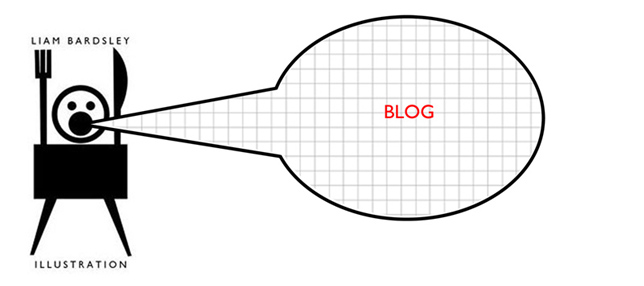


Issues & Practices: ‘The Rise of the Authorstrator’
The tradition of an illustrator is to respond to a brief producing an image/images that communicate an idea to provoke an interest in a subject or theme. Commercial art can be constricting as illustrators do not have a choice in what they are illustrating and arguably have not had the luxury and freedom that other disciplines have in terms of expression. Furthermore an illustrator must be mindful of a wide audience avoiding becoming self indulgent and talking to themselves visually. But more recently it is emerging that many illustrators and graphic designers are producing work in styles that transfer into other areas including surface design, toys, producing books for self publication and their own magazines. More so commercial artists are producing works for exhibition and their own self initiated projects marketing themselves as fine artists as well as illustrators.
The effects of this are that illustration’s boundaries are widening having traditionally been shunned by the art establishment begging the question what is the meaning of illustration now? The meaning of fine art has become increasingly diluted, the benefits of illustration are that the desirable aesthetic that is needed to catch the viewers eye whether reading a magazine or driving past a billboard advertisement can attract and communicate effectively to a gallery viewer.
Matthew Richardson is a great example of this phenomenon having exhibited in collaboration with Emily Mitchell at the George Rodger gallery, Kent in 2008. Richardson is a commercial illustrator with experience in editorial, advertising and book cover design that has used his experience of narrative in illustration to produce exhibition art for the narratives of ‘Conduits, schemes & spheres’.
The causes of this phenomenon are for a number of reasons. Firstly an illustrator may produce self initiated work while the commissions are drying up temporarily in which there is more time to explore deeper concepts to produce ideas from. It is also useful because ideas generated during this time can be drawn on or pushed further for commercial work in the future. Brad Holland, a very influential illustrator whose illustration has been described as a cultural force in an interview commented:
“I have a painting that’s going to be in the Society of Illustrators show this year that was published last year but it was done 10 or 11 years ago. It just took a while for the right article to come along. I’ve also got boxes full of sketches that I can mine for ideas whenever a job comes in.” (Holland, Varoom issue 04, 2007).
Promotion is another reason, many illustrators collectively produce their own magazines to send to art directors while self publicised books are an extra source of income.
Style is an important part of being an illustrator particularly a recognisable one which demands a strong, bold aesthetic. But appropriateness of style is considered when branching out into other areas like surface pattern design and toys. EBOY are a prime example of this having developed a style that resembles toys echoing the charming computer graphics from the 1980s/90s. The result of this is their style transfers well into toy design and it is clear that what is driving them is a love of toys ultimately from their childhood. An illustrators visual language is often informed by their own individual influences including any childhood interests.
They express their art as an extension of their childhood. Their influences come from: "Pop culture... shopping, supermarkets, TV, toy commercials, LEGO, computer games, the news, magazines..." (http://wapedia.mobi/en/Eboy, 20/04/09).
Illustration is commercial art and commerce is business. What Illustrators are doing is what is common in business practice- diversifying. This means that the meaning of illustration is widening becoming a multi-faceted discipline and cultural influence.
Gillian Blease is an example of an illustrator whose work transfers into surface pattern design, like her placemats for Jenny Duff. Like EBOY her style is appropriate to the aesthetic specifications of surface pattern particularly because of the simple ness of style and use of colour. Culturally now there is a real sense of having everything under one roof particularly from the influence of the Supermarket. This in turn has influenced the mentality of people including those in design. The boundaries of many disciplines including graphic design, fine art and illustration are blurring and in my opinion it is only right that someone should not be labelled as one thing ruling out the option of doing other things. Overall I think there are more avenues for the illustrator to explore.


